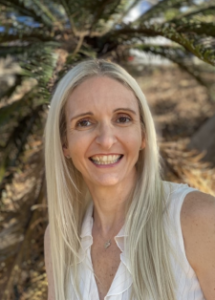Gender diversity is a term that is used to describe gender identities that demonstrate a diversity in expression, beyond the binary framework of male and female.
How do children and teenagers express gender?
Gender expression is how your child shows their gender. This might be through their name, clothes, behaviours, hairstyle and voice.
Almost all children begin expressing their gender identity at around 2 to 3 years old. They do this in the way they talk about themselves and through the clothes they choose. Children can be very firm about their gender from an early age.
Many gender diverse children also express their gender identity around the same age, and can be very firm and get upset, angry, annoyed, for example, when people refer to them as a boy or a girl, or by refusing to wear particular clothes, or saying they are a different gender. But as everyone is different, some children may start talking about their gender in primary school, at puberty … there is no hard and fast rule.
Gender diversity refers to gender non-conformity with or without gender dysphoria and includes aspects of gender identity, expression or behaviour that do not conform to societal gender expectations based on birth anatomy.
Gender dysphoria is “a marked incongruence between one’s experienced/expressed gender and assigned gender, of a least 6 months duration’’. In children, the desire to be of the other gender must be present, verbalised and cause clinically significant distress or impairment in social, occupational, or other important areas of functioning.
Gender dysphoria is not a psychiatric disorder or diagnosis. However, it is frequently associated with psychological distress such as anxiety and depression. Gender dysphoria is when a child feels distressed (the level of distress can range from manageable to debilitating) because their gender identity differs from their sex given at birth. Not all gender diverse people have gender dysphoria.
Gender diversity is also not a psychiatric disorder. It is not pathological. The Australian Psychological Society (APS) says that “gender dysphoria diagnosis is not intended to pathologize transgender people, but rather to acknowledge that distress can arise from living in transphobic societies where discord between assigned sex and gender identity is a best tolerated. The diagnosis is intended to support transgender people moving through transition rather than to label transgender people per se”.
In a 2017 Australian study with young people aged 14 to 25, identifying as trans or gender diverse:
- 4 out of 5 have self-harmed
- almost 1 in 2 have attempted suicide
- 3 in 4 have been diagnosed with depression
- more than 1 in 5 had been diagnosed with an eating disorder.
Many had experienced bullying, difficulties at school, discrimination, lack of family support or even homelessness (trans-pathways-report.pdf (telethonkids.org.au).
A number of protective factors were also identified, with peers and friends being the most important.
Over the years, I have met and worked with several gender diverse children and teenagers. My role as a psychologist is to support the young person and their family going through any kind of issues they may be experiencing such as peer/friendship difficulties, bullying, discrimination, abuse, humiliation, lack of understanding from school, the need to use the correct pronoun, low mood, and so much more.
 Author: Meggy Delaunay, PG Dip Psych Practice, PG Dip Dev Psych, M Genetic Psych, B Psych, MAPS.
Author: Meggy Delaunay, PG Dip Psych Practice, PG Dip Dev Psych, M Genetic Psych, B Psych, MAPS.
Meggy Delaunay is a psychologist who primarily works with children, adolescents and young adults. She is a registered Psychologist in Australia, New Zealand and France, and can provide therapy sessions in English and French.
To make an appointment try Online Booking. Alternatively, you can call Vision Psychology Brisbane on (07) 3088 5422.
Helpful Resources:
Here are some websites you may also find useful: